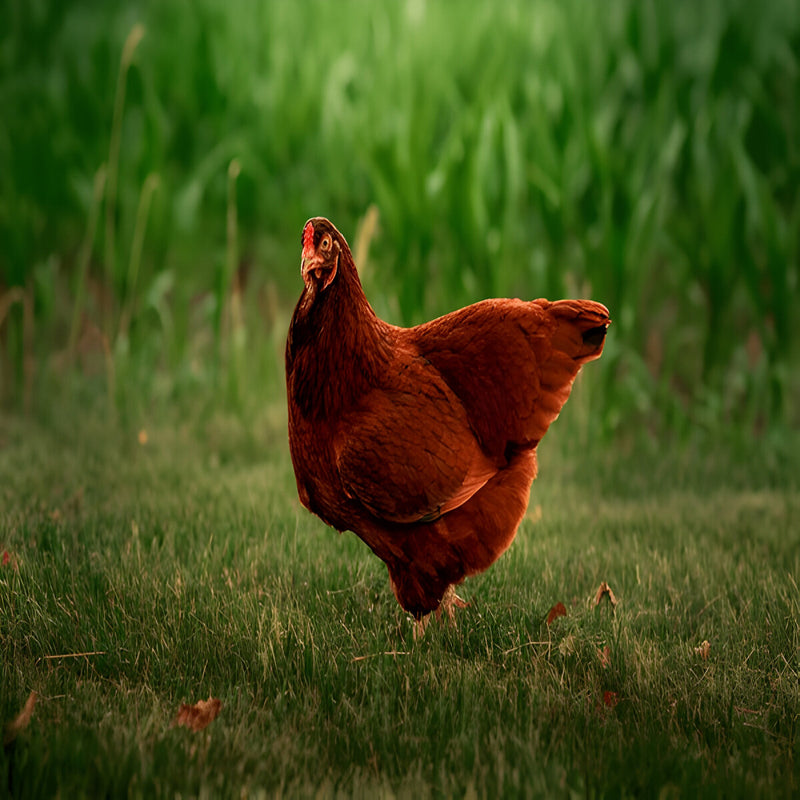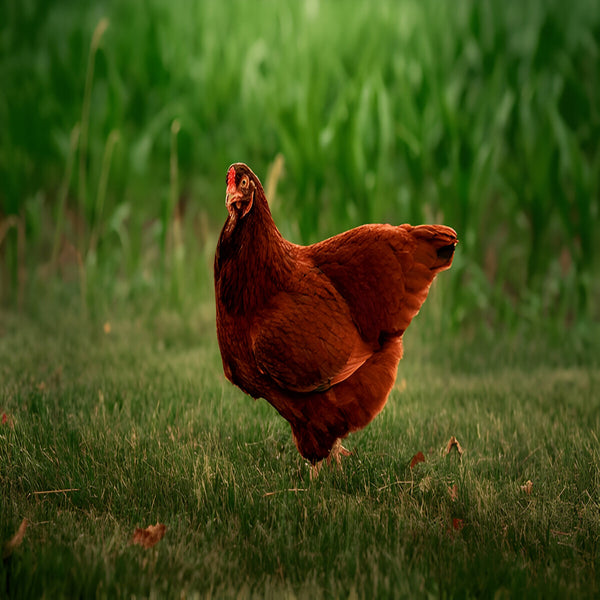-
Egg Size
Medium
-
Egg Quantity
Good (3/wk)
-
Egg Color
Brown
-
Cold Tolerance
Hardy In Winter
-
Heat Tolerance
Not Especially Heat Tolerant
-
Abundance
Rare
-
Personality
Friendly
-
Size
Large Fowl
-
Feathered feet
Yes
Buckeye
Buckeye Chicken
The Buckeye chicken, named after Ohio’s “Buckeye State” was developed in Ohio and first shown in 1902. It’s the only chicken breed entirely created by a woman, Nettie Metcalf of Warren, Ohio. Recognized in 1904 by the American Poultry Association, the Buckeye is a dual-purpose breed known for laying brown eggs. With a unique slanted body, meaty thighs, and powerful wings, Buckeyes are active hunters, even compared to cats for their mouse-catching abilities. Friendly and fearless, the males are known for their dinosaur-like roars.
Initially called "Pea Combed Rhode Island Reds," the breed was renamed "Buckeyes" in 1902 to gain broader appeal. Once popular for homesteads due to their hardiness and productivity, Buckeyes nearly went extinct in the 1950s as commercial poultry production rose. However, thanks to dedicated breeders, the Buckeye is making a comeback.
Egg Production
Buckeyes lay fewer eggs than most production layers today. The average weekly lay is 4 eggs per week. Eggs are light brown and medium size.
Meat Production
As a meat bird, the Buckeye rooster will weigh around 7 pounds at full maturity, which would be around 5 pounds dressed. Harvest at 24 weeks for a smaller but more tender table bird.
Personality
Buckeyes are calm and friendly, they get along with other breeds. If you want to keep a piece of American history in your backyard, get some Buckeyes.
Frequently Asked Questions:
What is the Buckeye chicken primarily used for?
The Buckeye chicken is a versatile breed valued for both meat and egg production. With yellow skin and brown eggs, it stands out as the only breed in the American class with a pea comb.
Are Buckeye chickens reliable egg layers?
Yes, Buckeye chickens are excellent layers and also grow quickly, making them ideal for dual-purpose use on the farm. They are known for their resilience, particularly in cold climates, as their small comb and wattles reduce the risk of frostbite. Their rugged nature, inherited from their Malay ancestry, also makes them exceptional foragers.
What color eggs do Buckeye chickens produce?
Buckeye chickens typically lay about four medium-sized, light-brown eggs per week.
What is the temperament of Buckeye chickens?
Buckeye chickens are known for their unique personalities. They are very active and are particularly good at catching mice, a trait some breeders liken to that of cats. They are also known to be quite fearless around humans, often being described as overly friendly.
Which chicken breeds are best for poultry farming?
For high egg production, breeds like Leghorns or other specialized layers are ideal. For meat, Cornish Cross or other meat-focused breeds are recommended. However, dual-purpose or heritage breeds, like the Buckeye, are excellent choices if you want chickens that provide both meat and eggs.
Buckeye Facts
- Poultry Show Class: American Class
- Weights: Hen—–6 1/2 lbs
- Rooster——9 lbs
- Pullet—5 1/2 lbs
- Cockerel—-8 lbs
- Purpose and Type: Primary production, Egg Laying & Pet/Secondary meat source
- Egg Shell Color: Brown
- Egg Production: 180-260 eggs per year (estimates only)
- Egg Size: Medium
- Temperament: Active Yet Gentle
- Gender Accuracy: 80-85%
- Fertility Percentage: 60-75%
- Broody: Variable
- Mating Ratio: 9 Females to 1 Male
- Roost Height: 2 to 4 feet
- Country of Origin: American
- APA: Yes, Recognized by the American Standard of Perfection in 1904.
- TLC: Watch Status, Considered a sustainable heritage chicken breed
- BREEDER FARM SOURCE: Poultry Breeding Farm has been developing our bloodline or strain of pure Buckeyes since 2009.
Notice: We do not sell items on Amazon or other websites.




